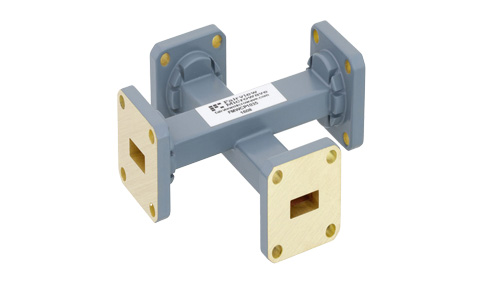Applications for Waveguide Directional Couplers

There are many types of RF couplers, including planar circuit, coaxial, and waveguide directional couplers. Of these, the highest power and performance versions are crafted using Waveguide Directional Coupler technology. Where coaxial and planar circuit directional couplers use coaxial and planar circuit transmission lines and planar waveguides for the coupling structures, waveguide directional couplers are built using flanged waveguide technology. This means that waveguide directional couplers are banded, but are also made from hollow rectangular, elliptical, or circular waveguide sections. These passive and solid metal constructions are typically very rugged and can handle relatively high power levels, even at extremely high frequencies compared to other directional coupler fabrication methods.
There are a variety of methods of constructing waveguide directional couplers. Some of these methods include Bethe-hole, multi-hole, magic-T, bi-directional/dual-directional couplers, and quad-couplers. The type of waveguide directional coupler dictates the coupling ratio, frequency range, directivity, power handling, and VSWR.
Waveguide Coupler Types
- Bethe-hole
- Multi-hole
- Magit-T (Magic Tee)
- Array
- Monitor
- Broadwall
- Directional
- Bi-directional/dual-directional
- Branchline
- Cross-guide
- Dual monitor
- Vestigial loop
- Quad couplers
- Hybrid couplers
- Single and multi-loop loop couplers
Another factor that impacts the frequency of these couplers is the waveguide size. Many waveguides are made using standard sizes that are compatible with standard waveguide flanges. These standard waveguide sizes have specified operating frequency ranges, including a minimum and maximum operating frequency of a specified dominant mode. The frequency range of the coupling structures could be the limiting factor in the operating frequency range of the waveguide directional couplers and be less than the specified bandwidth of the typical waveguide of that size.
In general, waveguide directional couplers outperform coaxial and planar circuit directional couplers in VSWR, directivity, return loss, power handling, voltage breakdown, insertion loss, and are often allow for more degrees of freedom and precision with coupling factor. However, waveguide directional couplers also have a larger footprint, much of which are dictated by necessary physical geometries and waveguide flange sizes. Some waveguide directional couplers have standard waveguide flanges for the main ports, but may use a coaxial port for either one or both of the coupled ports. As waveguide terminations tend to be higher performing than coaxial terminations in this case, if a single directional coupler is needed, it may be desirable to use a coaxial coupled port in conjunction with a waveguide termination for the other coupled port, as with the Waveguide Directional Coupler With Coaxial Coupled Port.

